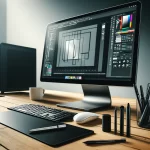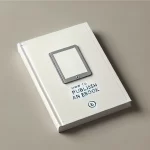For graphic designers, having the right desktop setup is crucial to productivity, creativity, and performance. A well-built desktop can improve workflow, reduce rendering times, and ensure that high-resolution graphics and complex designs are displayed accurately. In this article, we’ll guide you through the essential components needed to build a desktop tailored specifically for graphic design work.
1. Choose the Right CPU (Central Processing Unit)
The CPU is the heart of your desktop, and for graphic design, you need a processor that can handle the demanding software you’ll be using. Programs like Adobe Photoshop, Illustrator, InDesign, and 3D rendering tools require a lot of processing power, especially when working with large files or multiple layers.
- Recommended Specs: A multi-core processor with at least 4 to 6 cores is ideal. Intel’s i7 or i9 processors or AMD’s Ryzen 7 or Ryzen 9 processors are solid choices. These CPUs are powerful enough to handle graphic design tasks without lag.
- Why It Matters: The faster your CPU, the quicker it can render and process tasks, meaning less time waiting for results and more time for creative work.
2. Invest in a High-Quality GPU (Graphics Processing Unit)
The GPU plays a crucial role in rendering images, handling animations, and improving the performance of graphic design software. While the CPU handles the overall processing, the GPU assists in rendering high-quality graphics, especially for 3D design and complex illustrations.
- Recommended Specs: Look for a GPU with at least 4GB of VRAM. The NVIDIA GeForce RTX series or the AMD Radeon RX series are great options. For 3D rendering or video editing, opt for higher-end GPUs like the NVIDIA RTX 3080 or the RTX 4090.
- Why It Matters: A dedicated GPU will allow you to work more efficiently with high-resolution images and videos, ensuring that your designs load quickly and smoothly.
3. Plenty of RAM (Random Access Memory)
RAM is one of the most important factors in ensuring that your graphic design desktop can handle multiple tasks at once. With design programs that deal with large files, high-resolution images, and complex textures, having enough RAM is essential.
- Recommended Specs: 16GB of RAM is the minimum you should go for, but 32GB or even 64GB is ideal for intensive tasks, especially if you frequently use memory-hungry programs like Adobe Photoshop or 3D modeling software.
- Why It Matters: Having ample RAM prevents slowdowns when switching between applications and ensures smooth multitasking, which is crucial when working on multiple projects at once.
4. Storage: SSD vs HDD
Storage is vital for storing your projects, assets, and software. While traditional hard drives (HDDs) offer more storage space for a lower price, solid-state drives (SSDs) are significantly faster and more reliable.
- Recommended Specs: For graphic design, opt for at least a 512GB SSD for the operating system and software installation. You can also add a larger 1TB or 2TB HDD for storing large project files, assets, and backups.
- Why It Matters: SSDs offer faster read/write speeds, which will drastically reduce loading times for programs and files. HDDs can be used as additional storage for backup and archival purposes.
5. Choose the Right Monitor(s)
As a graphic designer, your monitor is one of the most important tools in your setup. A high-quality display will allow you to see your work in full detail, with accurate colors and high resolution. For professional design work, you’ll need a monitor that can display a wide color gamut and offer a high resolution.
- Recommended Specs: A 27-inch 4K monitor with an IPS panel is ideal for most designers. Look for monitors that cover at least 99% of the sRGB color space, and if you work in color-critical fields, aim for 100% Adobe RGB coverage.
- Why It Matters: A larger screen with accurate color reproduction ensures that your designs will look as intended on any device. Dual monitors can also improve productivity by providing additional workspace.
6. Quality Input Devices (Keyboard and Mouse)
The keyboard and mouse are your primary tools for interacting with your desktop, and as a graphic designer, precision and comfort are key. A responsive keyboard and mouse that fits your workflow can make a big difference in your daily tasks.
- Recommended Specs: Look for a mechanical keyboard with customizable keys for shortcuts. For the mouse, consider a high-precision, ergonomic model designed for design work, such as the Logitech MX Master or a stylus tablet for fine control.
- Why It Matters: A comfortable and responsive keyboard and mouse can improve your workflow and reduce the risk of repetitive strain injuries.
7. Build for Future Expansion
While it’s essential to build a desktop that meets your current needs, you should also consider future-proofing your setup. Having the ability to upgrade components as your workload increases will ensure that your desktop remains efficient for years to come.
- Why It Matters: Components like RAM, storage, and even the GPU can be upgraded over time to meet the demands of new software and larger projects. This will extend the lifespan of your desktop and save you money in the long run.
8. Consider Cooling and Noise Control
Graphic design work can be demanding on your desktop, and heavy rendering tasks can cause your CPU and GPU to heat up. To ensure your components stay cool and run efficiently, investing in proper cooling solutions is essential.
- Recommended Specs: Opt for high-quality fans or liquid cooling systems that provide adequate airflow and maintain optimal temperatures. Additionally, look for a case with sound-dampening features to minimize noise during heavy usage.
- Why It Matters: Effective cooling prevents overheating, which can reduce the lifespan of your components, and reduces noise during intensive tasks, allowing you to work in a quieter environment.
Conclusion
Building a desktop tailored for graphic design requires careful consideration of each component’s role in your workflow. By choosing the right CPU, GPU, RAM, storage, monitor, and peripherals, you can create a high-performance setup that will help you work more efficiently, with better results. A desktop designed for graphic design will not only speed up your workflow but also provide a comfortable and reliable platform for your creative projects.











